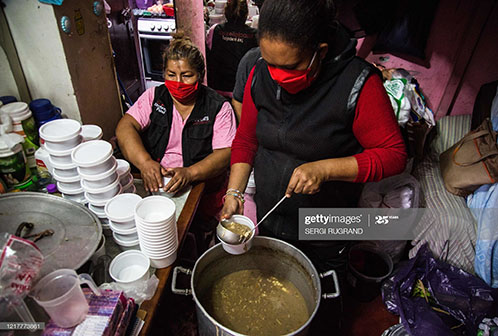News Americas, NEW YORK, NY, Mon. June 8, 2020: Latin American nations will see a huge drop in growth this year as the region contracts by 7.2 percent, the World Bank said in its June 2020 Global Economic Prospects report Monday. But one nation in particular will see a double-digit decline.
Peru, which has seen weak export demand in the context of a global recession, falling copper prices, and domestic measures to contain the spread of COVID-19, will see the largest deeply negative growth this year in the region at 12 percent.
However, it is forecast to rebound in 2021 with growth forecast at 7 percent.
Brazil, the epicenter of the coronavirus pandemic in Latin America with the highest number of cases and deaths, is set to see the second largest economic drop-off at 7.2 percent.
World Bank analysts said Monday the country, the biggest in Latin America and South America, will see the second biggest decline in growth this year by -8 percent. This, analysts, said is owing to mitigation measures, plunging investment, and soft global commodity prices.
It is forecast to rebound slowly next year with growth forecast at just 2.2 percent but that is based on the assumption of a steady fading of the factors that weighed on activity in 2020, as well as a restarting of the tax and business environment reform agenda that had been put on hold in order to prioritize the COVID-19 response.
Mexico will see the third largest economic decline this year, at -7.5 percent. This the Bank’s report said is due to slumping exports, significantly tighter financing conditions, a sharp drop in oil prices, a halt in tourism, and mobility restrictions imposed to slow the spread of the pandemic. But the Mexican economy is expected to rebound to 3 percent in 2021, supported by a recovery in private consumption and a normalization of exports.
Argentina will see the fourth largest economic decline this year, at -7.3 percent due to stringent COVID-19 mitigation measures as well as lower export demand and the impacts of uncertainty related to ongoing debt negotiations. A recovery to 2.1 percent growth in 2021 is, however, forecast, but that hinges on a bounce back in domestic demand, which would result from the restoration of confidence following the successful completion of debt negotiations.
Ecuador is set to see a -7.1 percent drop off this year, the fifth highest, but rebound to 4.1 percent next year; while Bolivia will see a -5.9 percent fall-off this year, the sixth highest.
And it is set to rebound by a mere 2.2 percent next year, as it is highly exposed to the plunge in oil and gas prices.
El Salvador will see a -5.4 decline this year but rebound to 3.8 percent next year.
However, Colombia, with more robust economic momentum in the leadup to the pandemic and much more policy space, is projected to contract by -4.9 percent in 2020,
Chile will see a -4.3 growth, adversely impacted by high uncertainty related to the constitutional reform process that began after social unrest in 2019 but rebound to 3 percent next year.
Uruguay is forecast to see a -3.7 percent drop-off this year but rebound to 4.7 percent next year.
Paraguay will see the lowest drop for the region, a -2.8 percent decline and rebound to 4.8 percent growth next year.
Central America’s economy is projected to shrink by 3.6 percent in 2020, constrained by stringent COVID-19 mitigation measures in most countries during the first half of the year, together with a sharp fall in remittances, a halt in tourism, and lower agricultural prices relative to 2019.
Nicaragua will see the largest decline for Central America with bank analysts projecting a whopping -6.3 percent drop-off and only a .7 percent growth next year.
The second largest drop in Central America will be experienced by Honduras, which is set to see a -5.8 decline in growth this year. But it is forecast to rebound by 3.7 percent next year.
Costa Rica is set to see a -3.3 percent decline in growth this year but rebound by 3 percent next year while Guatemala will see a 3 percent decline but rebound to 4.1 percent growth next year.
Panama will see the lowest decline for Central America, a -2 growth this year and rebound to 4.2 percent next year.
Giving a wider forecast for both Latin America and the Caribbean, World Bank analysts said the regions are projected to suffer not only the largest growth decline of the six regions of the world, but also its deepest recession of the past sixty years.











